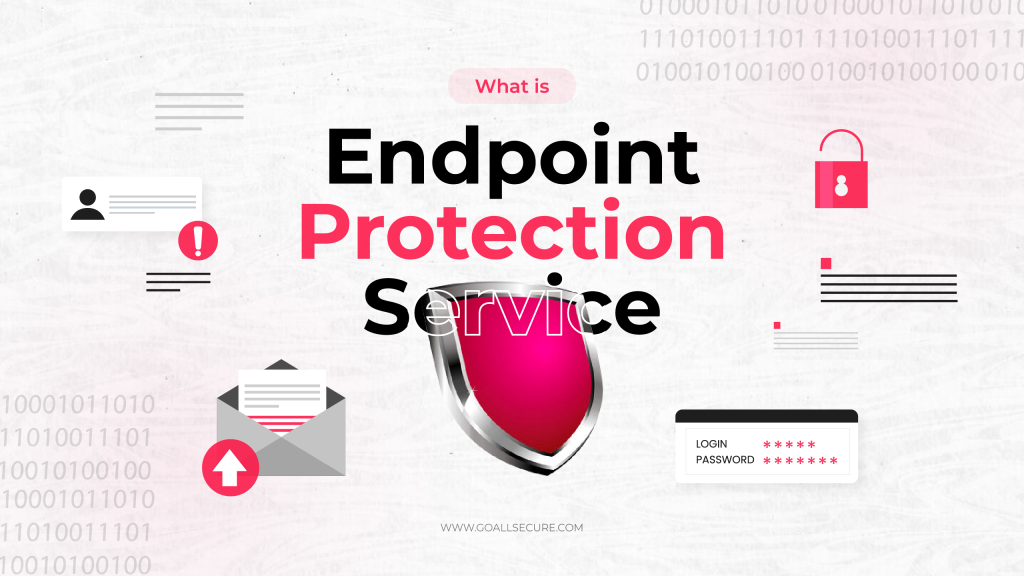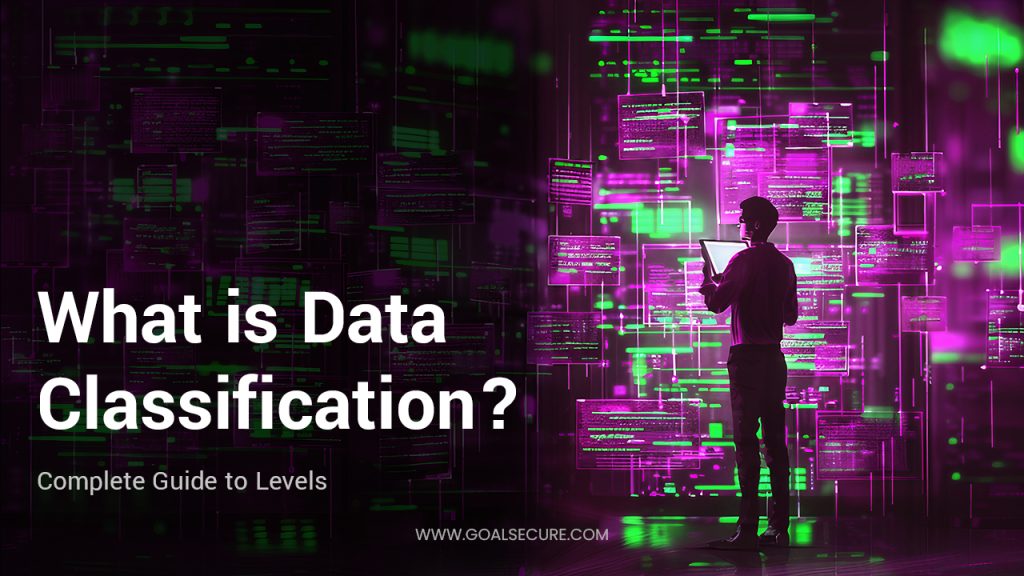Data is a precious thing and will last longer than the systems themselves.”
This quote by Tim Berners-Lee is fitting as we live in that world. Today, data is everything! More information than ever is created, stored, and managed nowadays, including sensitive data like spreadsheets with personal and financial details. And data is outrunning systems and humans. More than ever, this calls for data management and control to keep this plethora of data confidential, safe, and compliant. Organisations must implement a variety of procedures and techniques to do this. Data is everywhere, so much so that it is becoming challenging to quantify all of it, and an even bigger issue is how to secure it. Data classification is a prominent privacy technique and practice to your rescue. Establishing solid data classification standards and observing best practices that guarantee data security, accessibility, and functionality are essential to digital well-being. This blog explores data classification standards and the process that is necessary to keep an effective data management system running.
What Is Data Classification?
Today, no matter the size of an organisation, everyone uses, collects, processes and stores data. Organisations may find it challenging to handle, secure, and understand this enormous amount of data as more is generated and collected. Data classification can help with this. The identification of an organisation’s data types, sensitivity levels, and criticality is known as data classification. The process of classifying data involves determining its value, degree of sensitivity, and possible impact on an organisation in the event that information is lost or stolen. By labelling data to make it more searchable and trackable, this data protection procedure helps organisations identify the kinds of data they store and where it is housed.
In addition to deciding who has access to the data, data classification can also be used to organise, store, and safeguard the data. This facilitates an efficient and methodical understanding of the data environment, which in turn informs pertinent compliance standards, risk management, and data security requirements. Knowing how much sensitive data you have and how frequently it might be utilised, depending on how important it is to the company, will make it easier to decide who should have access to it and how to create the right kind of policies to make sure only those people can.
Why Do You Need Data Classification?
An enterprise data security policy must include data classification. Since client information, intellectual property, and other sensitive data are what allow businesses to stand out from the competition and compete successfully in the market, for many, their data is their most important asset. It is imperative that this data be protected, as it is hard to adequately safeguard sensitive information that you are unaware of. Organisations can safeguard themselves against specific high-impact hazards by using data classification, which offers the visibility necessary for efficient data security. These risks include:
- Data leaks
- Data loss
- Non-compliance with regulations
Data classification schemes are recommended by standards organisations like the National Institute of Standards and Technology (NIST) and the International Standards Organisation (ISO) to manage and secure information based on relative risk and criticality. These organisations advise against treating all data equally. These contend that a baseline set of security policies that help offer protection against threats, vulnerabilities, and dangers corresponding with the defined protection level ought to be linked to each data classification level.
Data classification is a starting point for figuring out the right amount of controls for the confidentiality, integrity, and availability of data based on risk to the organisation, regardless of whether the data is processed or stored in on-premises systems or in the cloud. For many years, organisations have utilised data classification to assist them in deciding which data should be protected at the proper levels, especially sensitive or essential data. It answers some big questions like:
- What data exists across their enterprise
- Where the data resides exactly
- Data’s value and possible risk
- Compliance regulations governing the data
- Who has access and can use the data
Different Sensitivity Levels of Data
One of the most crucial classification schemes used by organisations is based on data sensitivity. An organisation can decide what level of protection is necessary for a specific piece of data by classifying it based on its sensitivity. Most organisations categorise data risk into three tiers, though you may need to use a different number depending on your needs. Understanding that these risk levels and data categories are not the same thing is crucial. There are three primary risk levels and corresponding data categories that typically follow each level. However, a category like Personally Identifiable Information (PII) may fall anywhere from low to high on the risk spectrum, depending on the company’s mission and the type of information being gathered. Here is a straightforward three-tiered system for classifying data sensitivity that many organisations use:
Low Sensitivity Data
Anything that is allowed or intended for public distribution is considered low-sensitivity data. Websites, promotional materials, datasheets, and comparable open data are examples of this. There is no risk to the public if this data gets leaked and is safe to use. This usually implies that it is not crucial to the company’s functioning or that it is simple to replace if it disappears. Disclosing such knowledge wouldn’t provide a competitor with an advantage or harm an organisation’s reputation because some internal information is less dangerous.
Medium Sensitivity Data
Not highly sensitive or secret, medium-sensitivity info is meant solely for internal use. Internal communications and documents devoid of sensitive information are examples of medium-sensitivity data. Although this information is often meant for internal use only and shouldn’t be made public, leaking it wouldn’t significantly jeopardise the organisation’s goals. This could contain business documents that pose no damage to the company’s reputation but that could be challenging to replace in the event of a loss. Certain organisations will categorise sensitive information and fundamental internal data differently.
High Sensitivity Data
If compromised or lost, highly sensitive data could have disastrous consequences for an organisation. At this level of risk, all data directly affecting an organisation’s operations is considered highly sensitive. Trade secrets, information that isessential to a business’s ability to compete, financial data, intellectual property, personally identifiable information (PII) from customers, and other confidential information are included. High-risk data should have strictly restricted access, and it can be advantageous to keep the data in an encrypted format. Even a minor breach could cause significant harm to an organisation.
An organisation may use the same three-tier system with more informative labels. For instance, High, Medium, and Low can be substituted by Confidential, Internal Use Only, and Public Release. This saves users from having to commit the meaning of the High, Medium, and Low sensitivity labels to memory by giving them suggestions on how to handle the various sorts of data.
What Are The Criteria For Data Classifications?
Effective data classification enables organisations to protect sensitive data, adhere to legal requirements, and make decisions based on pertinent information. Businesses can classify data according to its sensitivity, relevance, and access level with the use of data classification tools. Three types exist for data classification: context-based, content-based, and user-based:
Context-Based
An examination of each piece of data’s context serves as the foundation for a context-based classification system. Organisations that deal with enormous amounts of data and need to swiftly identify relevant information to make decisions may find context-based data classification very helpful. This method mainly looks at the metadata associated with files to identify hints indicating that data inside is sensitive, as opposed to directly inspecting file contents. This could involve figuring out which person authored a file, where it’s saved, or what programme it was made for. Context-based classification determines the data type from contextual information, including history, attributes, asset owner, and environment, rather than looking at what is included in a file. Organisations can meet regulatory obligations, enhance data management procedures, and guarantee appropriate protection of sensitive information by utilising metadata and other contextual information. Even though metadata might provide significant insights, the classification process itself may be highly misleading due to erroneous conclusions.
Content-Based
Data classification based on content entails grouping information according to its actual content. Organisations that manage sensitive data, such as credit card numbers, personally identifiable information (PII), and intellectual property, will find this classification particularly useful. Tools like data loss prevention (DLP) software are used in this classification to search data for particular phrases or patterns that point to sensitive information. Data categorised according to its content allows organisations to easily search for and retrieve specific information. This embodies the literal process of going through files and looking for private information. This can be useful if you have an issue with confidential information being hidden in seemingly innocent file types. However, there’s also a chance that you’ll produce false positives, wasting workers’ time.
User Based
Classifying data according to the user accessing it is known as user-based data classification. This kind of classification is helpful for organisations with varying levels of security clearance or data access. Sensitive data is only accessible to authorised users thanks to user-based classification. Users are tasked with sorting through and organising files. While very effective in reducing false positives, this method depends on having both the time to manually classify data and a highly trained user base. This implies that it is usually limited to smaller datasets or leaner organisations.
Different Data Classification Levels Used by Businesses
Numerous factors, including the format, industry it relates to, relevant regulations, and contents of the data set, mightinfluence how data is tagged and analysed. However, there are a few main categories of data classification that are needed to establish uniformity across all the data. When it comes to data management, data classification is essential since it creates the proper degree of protection for different kinds of information. This procedure entails classifying data based on its importance, sensitivity, and required degree of security.
Sensitive information is kept in almost every organisation, frequently far more than they are aware of. Each organisation needs to be mindful of the particular kinds of sensitive information that are kept within their companies and classify data in ways that maximise data security, privacy, and compliance. Compliance authorities say data stored in today’s organisations can be broadly divided into five major categories. The five primary categories of data classification span from freely shared publically available data to highly sensitive data that is necessary for an organisation’s operations and needs to be protected. Let’s examine a few typical categories for data classification:
Public
Information that is openly shared and accessible to everybody is referred to as public data. Since this kind of data doesn’t contain private or sensitive information, it doesn’t need extra protection. Public websites, news releases, and marketing materials are a few examples of public data.
Private
Information that is not sensitive or confidential but not meant for public access is called private data. While not as much as sensitive or private data, this kind of material still needs to be protected. Employee email addresses, business phone numbers, and non-sensitive financial data are a few examples of private data.
Confidential
Information that is deemed sensitive and ought not to be disclosed to the public is known as confidential data. Since it has the potential to inflict significant harm if it ends up in the wrong hands, this kind of data needs to be protected to a higher standard than public or private data. Trade secrets, credit card information, and customer data are a few examples of confidential data.
Restricted
The most sensitive kind of data is restricted data, which is essential to an organisation’s functioning. Since it might seriously harm an organisation if it is accessed or disclosed by unauthorised parties, this kind of data needs the highest level of protection. Plans for essential infrastructure, encryption keys, and access codes are a few examples of limited material.
Internal Use Only
The information utilised inside an organisation and not meant for public consumption is referred to as internal data. Although this kind of information isn’t always private or sensitive, it shouldn’t be made public. Financial statements, internal reports, and personnel records are a few types of internal data.
What Does the Data Classification Process Look Like?
Procedures for classifying data vary widely based on the company’s goals. The volume of data that businesses generate on a daily basis necessitates automation for the majority of data classification tasks. Generally speaking, following the recommended practices in data classification projects yields successful results. Before we look into that, let’s learn about the three ways to develop the said programmes for data classification:
Manual: Conventional data classification techniques that call for human oversight and enforcement.
Automated: Technology-driven solutions that enhance persistence (round-the-clock data classification) and remove human intervention risks (excessive time, errors).
Hybrid: A mix of both humans and machines, where technology facilitates efficiency and the application of policies and human participation offers context for data classification.
A Standard Data Classification Process
Implementing processes to help with data location, categorisation, and cybersecurity selection is the first step when you determine it’s time to classify data. The architecture that best secures data and your organisation’s compliance rules determine how each procedure should be carried out. The standard procedures for data classification include the following:
Defining Your Organisation’sOrganisation’s Goal
Examine the organisation’s current information handling arrangement. Where are you now with storage? What policies and procedures govern your association’s information order? The answers to these questions will inform your desired changes. Additionally, you will learn more about the type of data you are handling. It’s crucial to establish security goals in light of your unique company requirements before starting the data classification process.
Creating Data Classification Standards/Policies
A categorisation policy facilitates the simplification of repeating a process, reducing errors and simplifying the task for staff members. It comes in handy in the event that you generate more data in the future. Create a policy for classifying the different kinds of data that your organisation possesses. Take into account corporate security requirements, applicable regulations, and other factors.
Categorisation of Organisation’s Data
The goal of this phase is to define the patterns and standards that enable users to categorise data assets. Data owners evaluate each data asset’s content, context, and possible impact to determine the proper categorisation level in cooperation with IT and security teams. Sort your data according to its sensitivity, who should be allowed to access it, and any compliance consequences in the event that it is made publicly known after doing a risk assessment and putting policies in place.
Applying Proper Security Controls On Data
Based on the designated classification level, the proper security controls and protection mechanisms are applied to the data assets once they have been classified. Every person and resource that needs access to data should be required to submit an authorisation request and undergo authentication through the controls you apply. Users should only be granted access to data when it is essential for them to do their jobs or when they have a “need to know” basis.
Continuous Reviewing, Updating And Training
Classifying data is an ongoing process that needs to be updated and reviewed frequently. Do not sit back and relax once you are done with the steps, as mentioned earlier. Remember that your data’s compliance and security depend on efficient data monitoring. An attacker may have months to steal data from the network if there is no monitoring. New data assets could also be developed, and the sensitivity of old data may alter as it changes over time. To make sure that data categories are accurate and relevant, you should evaluate them on a regular basis and make any necessary revisions.Appropriate monitoring controls find anomalies and shorten the time it takes to identify, neutralise, and remove a danger from the network. It also ensures that data categorisation policies and procedures meet the needs of your organisation.
Benefits of Data Classification?
- Enhanced security and data protection
- Effective risk mitigation
- Easily meeting regulatory compliance needs
- Efficient resource allocation
- Tailored access controls and privacy compliance
- Improved incident response and data lifecycle management
- Increased operational efficiency
- Reduced risk of data breaches
A data classification policy is the cornerstone of efficient security measures for today’s businesses. Sensitive data cannot be sufficiently protected without a consistent method for data classification; after all, you cannot safeguard something you do not know exists, where it is, or whether it needs to be protected at all. The technique of classifying data is crucial to contemporary data management. Finding and obtaining valuable insights is getting more complex as data volumes keep rising, and much of it is still unstructured.
However, the process of developing an extensive and sophisticated data classification programme is not one-size-fits-all. Nonetheless, the procedure may be divided into several essential parts, each of which can be customised to fit the particular requirements of any organisation. GoAllSecure can help you build robust data classification policies for your specific needs. With our assistance, you can implement proper security controls, protect data, and maintain regulatory compliance throughout the data’s lifecycle. Our cybersecurity services are designed to fit your budget and business needs. If you have any queries regarding data classification, contact us at +91 85 2723 7851 or +44 20 3287 4253.

















 TRAVEL & HOSPITALITY
TRAVEL & HOSPITALITY HEALTHCARE
HEALTHCARE RETAILS & ECOMMERCE
RETAILS & ECOMMERCE BANKING & FINANCIAL
BANKING & FINANCIAL AutoMobile
AutoMobile MANUFACTURING
MANUFACTURING FOOD
FOOD EDUCATION
EDUCATION



